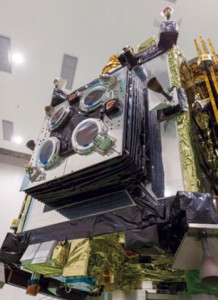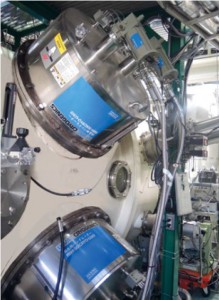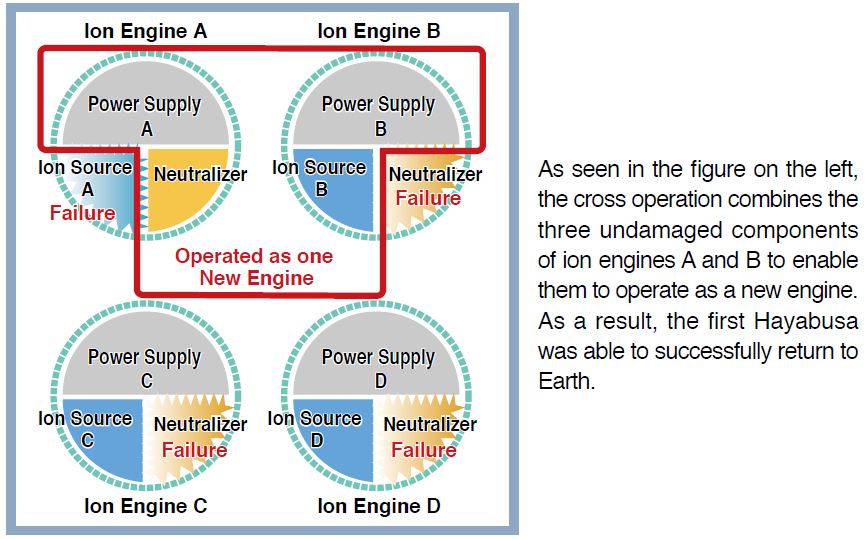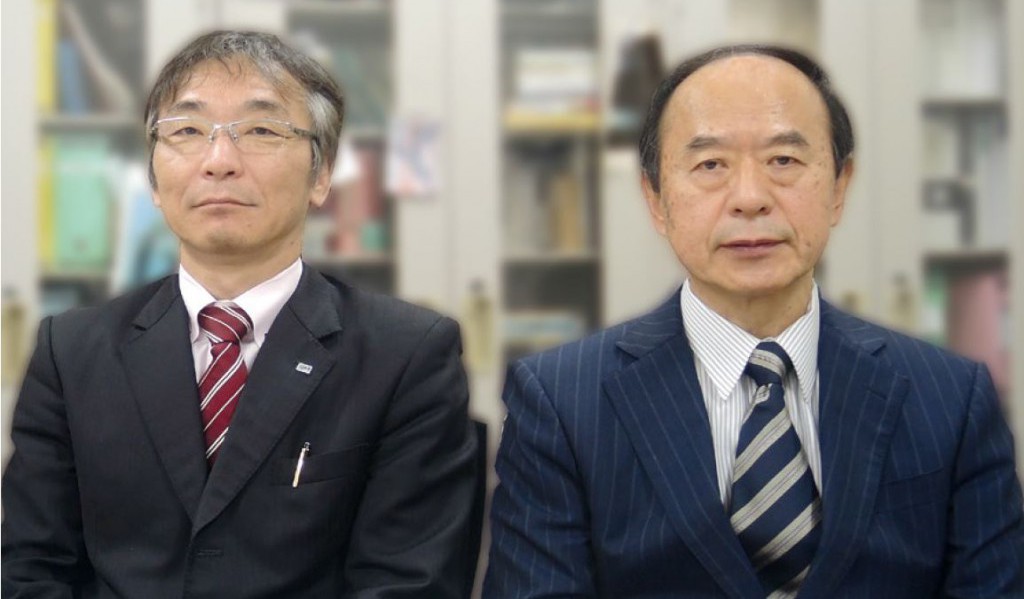This post is also available in: Japanese
Leading Hayabusa to Success by Leveraging a Uniquely Japanese Approach That Differs from That Employed by the United States


Obinata: Despite so many durability tests having been conducted, the first Hayabusa met with an unexpected accident when it landed on Itokawa. When we design equipment, we do everything possible to ensure success by taking additional measures in case the original idea fails. But this can make things overly complicated, thereby causing further problems. With limited weight and limited space in the Hayabusa project, you took various measures to prepare for unexpected events, didn’t you?
Kuninaka: Since a satellite does not carry humans, we employ a design method that will enable it to cope with one failure.
For example, if we have 100 items, we devise countermeasures on the assumption that one of them will suffer a failure (defect). If we assume that two failures will occur, we have to envisage 100 × 99 = 9,900 cases, and there is no way we can cope with such a large number of cases. The basic policy for space technologies used in unmanned spacecraft is for them to be able to cope with one failure. A policy known as “three inhibits” is used for manned spacecrafts. It aims to solve all possible problems by taking three measures. Therefore, different approaches are taken for manned and unmanned missions. Since it is an unmanned explorer, Hayabusa is operated using three ion engines with another installed as a backup on the assumption that one failure may occur.
Obinata: So that’s why Hayabusa has four ion engines.
Kuninaka: Such sizing is an important issue that requires engineering insight. For example, if we are to structure the propulsion system for a satellite using one engine, we have to carry 200% because we need one more engine as a backup. If we cover the required propulsion with three engines, we need to carry only 133% in total even if a backup engine is added. The result is a lighter, smaller satellite. For this reason, how the satellite is sized is an important matter that requires engineering insight. Setting a satellite to a small size reduces the scale of the ground tests, allowing us to manage with a relatively small chamber.
At that time, the United States emerged as a rival by attempting to conduct space exploration using an ion engine.
Starting later, the Americans were able to complete in just three years what it took Japan five to six years to achieve, and their launch took place earlier than the Japanese one did. We got angry (laugh).
Since American-built ion engines are large, their artificial satellites are equipped with only one. In Japan, we covered the propulsion needs with four small engines. In terms of scale, American-built ion engines are unquestionably superior, but we felt that we could use a different approach to that used by the Americans because we had as many as four engines. The ion engine works with a set made up of an ion source and a neutralizer.
Since the Japanese satellite has four engines —each of which carries such a set— we firmly believed that ours would be superior because each of the neutralizers could be combined with other engines.
Obinata: That was what you refer to as a “cross-networked circuitry in the ion engine,” which was a great achievement that led to the first Hayabusa being successful in the end.
Kuninaka: Such an innovative idea came about precisely because the United States emerged as our rival, prompting us to work harder.

Developing Highly Reliable Data Through Repeated Simulations
Obinata: At ULVAC, I always tell our developers that they must perform simulations properly in the design stage without fail when they develop new products. In the case of Hayabusa, engineers had to employ a combination of many specialized technologies, so the number of simulations that had to be performed was enormous. I imagine you had to make effective use of data obtained from many areas. How did you get on?
Kuninaka: The techniques used to build satellites have been established to a certain extent, and they are assembled in stages. At first, fairly broad specifications are given, and as the detailed design progresses, various profiles become more real. Something real and concrete —rather than ambiguous figures— emerges. This process is repeated so as to put together the whole picture of the satellite.
Obinata: At our company, too, an unexpected result is sometimes obtained as we proceed with development, and this forces us to make a decision based on that result. What is important is to clarify whether such an outcome was obtained as a result of our best efforts. The reason is that the results of half measures may be meaningless.
Kuninaka: That’s right. We have some students, and I check the results of their research every week. Some results include some very dubious figures, but I encourage them to develop more reliable data by letting them repeat the experiment several times while I offer them some ideas.
Evolving the Ion Engine Further by Rejuvenating the Research Teams
Saito: In the first Hayabusa project, you performed exhaustive durability tests for the ion engines and incorporated Japan’s own unique ideas into them. Did you make any new attempts or introduce any new initiatives for Hayabusa 2?
Kuninaka: We were able to obtain a clear understanding of various space phenomena through our first ion engines and get various data through field activities. Based on these results, we decided that we wanted to create much better engines. I also made that a research assignment for our students. Rejuvenating the research staff is another important issue that needs to be addressed. Since, just like other researchers, I am getting older, I want to rejuvenate the research organization. Even though we would like to hire young researchers, JAXA’s budget is tight, so we have to make the most of external funds from NEDO and other organizations to recruit research personnel. Furthermore, since that was still not enough, we also encouraged companies that were willing to manufacture ion engines. This is also part of our indirect efforts to strengthen our human resources. At the
same time, since it is a waste of resources to make such companies operate only in the Japanese market, we travelled overseas with their personnel to conduct sales activities.
Obinata: Are ion engines used in commercial rockets?
Kuninaka: American ion engines are used in commercial rockets, but the microwave-discharge iron engine I developed hasn’t been yet. My ambition is to have it mounted on geostationary satellites.
That would generate a large volume of sales. If it is used for commercial satellites, it will be mass-produced.
Hayabusa 2’s Ion Engine Applies the Lessons Learned from the First Hayabusa
Kuninaka: In the past, there were three space-related organizations in Japan —the National Space Development Agency of Japan (NASDA), the Institute of Space and Astronautical Science (ISAS), and the National Aerospace Laboratory of Japan (NAL)— but these were all integrated to form
JAXA in 2003. I was affiliated with ISAS, which worked on scientific satellites only, not commercial ones. Since NASDA developed many commercial satellites, I envied the organization, thinking that if I was working there, many of the ion engines I had developed would be used. In 2003, the three
organizations were combined to form JAXA, which resulted in my field of activity expanding suddenly about 100 fold. The reorganization of the three organizations into JAXA was really beneficial to me.
Saito: Doesn’t that also mean that you became the manager of the Hayabusa 2 project, and that such a change in position allowed you to look at things in new ways?
Kuninaka: The challenge we face for the Hayabusa 2 project is the number of things we can concentrate on creating in a short period of time. The situation forced me to make decision after decision after decision. It was a rather restricted life (laugh).
On reflection, the ion engines used on the first Hayabusa were not perfect. If they had been perfect, we would have been able to make advance preparations more easily, but since the explorer’s return —which had initially been scheduled for June 2006— was postponed to 2010, we were concerned about whether the postponement might affect the project or not. We took several measures based on such assumptions, but we still didn’t know whether these measures would really work. The delay meant that more tasks were assigned to the ion engines. Attitude control, which was originally performed without using the ion engines, now had to be performed using the engines, and this forced Hayabusa to employ a crossnetworked
circuitry in the ion engine in order to return to Earth.
We had tried employing a cross-networked circuitry in the ion engine using an experimental model, but we had not done so using an actual model to confirm whether it worked.
Obinata: In various kinds of development competition scenarios, even if our competitor clearly exceeds us, we still rack our brains to try and develop something that will rival or surpass them. That was how you developed the idea of a cross-networked circuitry in the ion engine, wasn’t it?

Kuninaka: I also think it’s important to work hard together —after all, the grass is always greener on the other side of the fence. Inferiority does, in a sense, provide us with opportunities to develop such new technologies. When we announced that we would use a microwave-discharge ion engine for the first Hayabusa, overseas researchers said that we would never be able to do so. Even lecturers at Japanese universities said the same. It may sound a bit paradoxical, but if saying “You can if you try” is a form of positive encouragement, then saying “There is no way you can” is a form of negative encouragement. If you use negative encouragement in a clever way, employ the feeling of vexation as a springboard, and do your best, you will be able to achieve what you previously considered to be impossible.
Hayabusa 2 was based on the obstacles that the first Hayabusa overcame, so as the December 2014 launch approached, we proceeded with its development with plenty of confidence. Since this is also a science and technology project, however, we can’t be sure that we will be able to find solutions in real time. The only thing we can do is to apply the best scientific and technological knowledge that is available at the time. New knowledge may emerge five or ten years later that makes us realize that the decisions we made five or ten years before were wrong. This often occurs in the field of science and technology, and it is unavoidable.
The reason for this is that what we were trying to clarify was beyond human knowledge at the time.

